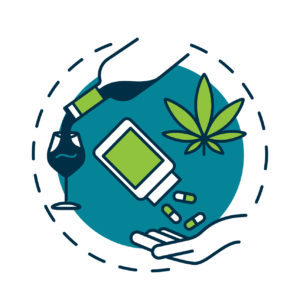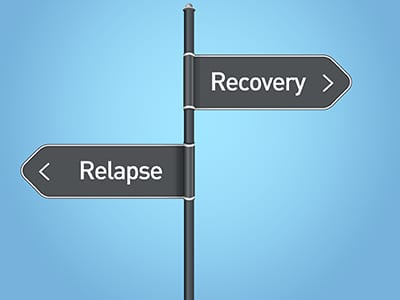Substance Abuse

Welcome to Substance Abuse training, developed and presented by the Indiana Child Welfare Education and Training Partnership. This training is available in different formats for State of Indiana employees and School of Social Work students. Scroll down the page for instructions on how to take this training.
State Employee Training #
State employees can take Substance Abuse training through the State of Indiana’s Learning Portal (also known as SuccessFactors). If you’re already logged into My Learning in SuccessFactors, you can select the Substance Abuse button to go directly to the training.
If you haven’t logged in, the Substance Abuse button will take you to a log-in screen. After you’ve logged in, select the My Learning button. From there, you can search for this training by name (using the Find Learning search box) or come back here and use the direct training link.
For a video walkthrough of how to access this training, select the help button.
School of Social Work: Student Training #

Introduction to Substance Abuse
Welcome to the Substance Abuse Training developed and presented by the Indiana Child Welfare Education and Training Partnership.
Quality Indicator
DCS considers the impact of substance abuse on the caregiver, as well as the children involved. But its effects on the caregiver are considered in the context of the safety, stability, permanency, and well-being of the children. Therefore, it is important for the Family Case Manager to provide a thorough assessment and consider plans that allow children to remain safely in the home if possible. When working with families who are experiencing substance abuse, the Family Case Managers must also be aware of the timeframe required by the Adoption and Safe Families Act. In addition, the FCM should consider the amount of time it takes to complete treatment and achieve sobriety.
What is Substance Abuse
 While the terms substance use and substance abuse are sometimes used interchangeably, there is a distinct difference between the two terms. Substance use is simply the consumption of alcohol, tobacco, or other substance. Substance abuse on the other hand is defined by the World Health Organization as: “The harmful or hazardous use of psychoactive substances, including alcohol, tobacco, and illicit drugs.”
While the terms substance use and substance abuse are sometimes used interchangeably, there is a distinct difference between the two terms. Substance use is simply the consumption of alcohol, tobacco, or other substance. Substance abuse on the other hand is defined by the World Health Organization as: “The harmful or hazardous use of psychoactive substances, including alcohol, tobacco, and illicit drugs.”
What is Substance Addiction

When a person engages in a pattern of substance abuse, it can sometimes develop into an addiction. An addiction is defined by the American Psychological Association as “A chronic disorder with biological, psychological, social and environmental factors.” The addiction creates both psychological and physical changes for the consumer that make it difficult for the consumer to control when or how much of the substance they will use. The examples listed are just a few of the adverse psychological and physical changes that can accompany addiction.
Psychological Changes:
- Impulse Control
- Judgement
- Motivation
- Memory
Physical Changes:
- Brain Changes
- Impaired Sleep
- Muscle Degeneration
- Liver and Kidney Diseases
Relapses
 In your work as an FCM, it is likely that you will encounter families who struggle with an addiction to substances and who relapse during treatment for those substances. While there is no conclusive clinical definition for the term “relapse”, a study on relapse prevention by the National Institutes of Health defined a relapse as: “A setback that occurs during the behavior change process, such that progress toward the initiation or maintenance of a behavior change goal is interrupted by a reversion to the substance use.”
In your work as an FCM, it is likely that you will encounter families who struggle with an addiction to substances and who relapse during treatment for those substances. While there is no conclusive clinical definition for the term “relapse”, a study on relapse prevention by the National Institutes of Health defined a relapse as: “A setback that occurs during the behavior change process, such that progress toward the initiation or maintenance of a behavior change goal is interrupted by a reversion to the substance use.”
Permanency Clock
 During New Worker Cohort training, you learned that the Adoption and Safe Families Act set timeframes to expedite permanency for children in out of home care. Naturally, addiction is a challenging obstacle for families to overcome. Therefore, it is important that Family Case Managers Recognize the time conflicts between the permanency clock and the time it takes caregivers to work through addiction treatment.
During New Worker Cohort training, you learned that the Adoption and Safe Families Act set timeframes to expedite permanency for children in out of home care. Naturally, addiction is a challenging obstacle for families to overcome. Therefore, it is important that Family Case Managers Recognize the time conflicts between the permanency clock and the time it takes caregivers to work through addiction treatment.
Permanency Clock Challenges
-
1
Recognize Problem
-
2
Stages of Change
-
3
Access Treatment
-
4
Treatment Participation
-
5
Relapse Impact
Caregivers will encounter challenges in the face of addiction treatment. Some of these challenges may include: Time to recognize the problem. Time to work through the stages of change. Time required to access open treatment slots. Time required to participate in treatment successfully. And the impact of relapses that may occur.
Permanency Clock: The FCM Role
There are several strategies an FCM can leverage to support the caregiver through the process of adhering to the permanency clock. The FCM can:
- Communicate regularly with service providers.
- Help service providers understand the permanency clock timeline.
- Recognize that the caregiver may make progress, and then regress at some points during the process.
- And continuously work to engage the caregiver and encourage them to maintain treatment services.
Signs of Substance Abuse
 An FCM’s ability to identify patterns of problem behavior that emerge over time is useful when working with families for extended periods of time. The following slides contain possible signs of substance abuse in adults. Please note that there may be other factors contributing to these signs in your work. These indicators of substance abuse should be viewed as red flags for further exploration, not automatic indicators of substance abuse.
An FCM’s ability to identify patterns of problem behavior that emerge over time is useful when working with families for extended periods of time. The following slides contain possible signs of substance abuse in adults. Please note that there may be other factors contributing to these signs in your work. These indicators of substance abuse should be viewed as red flags for further exploration, not automatic indicators of substance abuse.
When assessing for substance use there are many signs we may look for to confirm or deny our suspicions. The following list provides some examples of indicators that may help better inform your assessment of whether or not substance abuse exists.
Signs of Substance Abuse:
- General Appearance
- Physical Indicators
- Environmental Indicators
- Work Indicators
General Appearance

These examples of an individual’s general appearance may be signs that they are engaged in substance abuse.
Signs of Substance Abuse:
General Appearance
Face: Puffy, flush or pale
Eyes: Dilated or small pupils,
broken capillaries, red or watery
eyes, sensitivity to light
Nose: Stuffy, runny, frequent
sniffing or nosebleeds
Skin: Bruises, needle marks,
scratches, sweating
Nails: gray, blue, yellow or ashen
Physical Indicators

These physical indicators may be signs that an individual is engaged in substance abuse.
Signs of Substance Abuse:
Physical Indicators
Change in appetite or eating behaviors
Change in sleep patterns, lethargy
Loss of coordination
Blank Expressions
Slurred Speech
Memory Loss
Weight loss
Environmental Indicators

These environmental indicators may be signs that an individual is engaged in substance abuse.
Signs of Substance Abuse:
Environmental Indicators
Smell of drugs or alcohol in the home
Attempts to disguise odors in the home
Containers of pills or alcohol
Pills or drugs visible in home
Visible paraphernalia
Work Indicators

These work or professional indicators may be signs that an individual is engaged in substance abuse.
Signs of Substance Abuse
Work Indicators
Frequently skipping or missing work
Loss of Interest in work
Declining performance
Frequently late
Quitting
FCM Role in Substance Abuse
As the FCM, you have regular interactions with a family and you may be the one to notice the possibility of substance abuse issues. It is important that you are able to identify signs and make referrals. This is a critical step for children’s safety stability permanency and wellbeing.
It is vital that you understand that your role is not to diagnose, but to recognize signs that indicate an assessment referral is warranted.
Thank You
Thank you for completing the Substance Abuse Training.